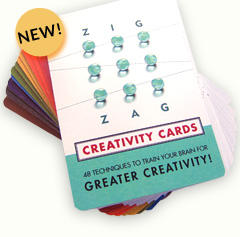Zig Zag in Action
In early 2010, the hottest thing in phone apps was location, location, location. With its built-in GPS feature, your phone could tell you all sorts of useful things, like which friends were nearby and how to find the closest public toilet (or the closest Starbucks). Foursquare had just been released for the iPhone a year earlier, and the digerati were “checking in” to let their friends know wherever they happened to be.
A young programmer, Kevin Systrom, wanted a piece of the action. He had worked for Nextstop, Google, and an early version of Twitter, and he was ready to strike out on his own. Attracted by the success of Foursquare, he started with a driving question: “How can I create a great location-sharing app?” The programming took only a few months, and the result was a simple iPhone app that let you check in to a location, make plans for future location check-ins, earn points for hanging out with friends, and post pictures. Because he liked fine Kentucky bourbon whiskeys, he named the app “burbn.”
Sad to say, it wasn’t a big success. In retrospect, burbn was complicated to use, with a jumble of features that made it confusing. But around this time, a second programmer, Mike Krieger, joined Kevin. Kevin and Mike used a set of analytic tools to figure out what their customers were doing with burbn. Sure enough, they weren’t “checking in” anywhere. But they were posting and sharing photos like crazy! Kevin and Mike decided to ditch burbn completely and start with a new question: “How can we create a simple photo-sharing app?”
They began by studying all of the popular photography apps, and they quickly homed in on two main competitors. Hipstamatic was cool and had great filters, but it was hard to share your photos. Facebook was the king of social networking, but its iPhone app didn’t have a great photo-sharing feature. Mike and Kevin saw an opportunity to slip in between Hipstamatic and Facebook, by developing an easy-to-use app that made social photo-sharing simple. They chopped everything out of burbn except the photo, comment, and like features.
It took months of experimentation and prototyping to get everything just right. One of their early versions was called Scotch (Kevin liked Scotch whisky, too) but it was slow and filled with bugs, and you couldn’t use filters on your pictures. These various zigs and zags convinced them that the key to success was to make the app super-easy. In their final version, you could post a photo in three clicks.
They renamed the app Instagram and launched it on October 6, 2010. On the first day, 25,000 users signed up. They hit one million users in three months. Taking an idea from Twitter, they made every photo public by default. (When the pop sensation Justin Bieber joined, thousands of girls responded to every photo he posted, causing a huge spike in Instagram activity.) By April 12, 2012, when Facebook purchased Instagram for $1 billion, it had been installed on about 10 percent of all iPhones.
When Kevin Systrom built burbn, he was driven by the question “How can I create a great location-sharing app?” It turned out to be the wrong question. Instagram succeeded because Kevin and Mike were willing to dive deeper into this first step, ask. They looked closely at the failure of burbn, and they used that experience to figure out their next step: They found out what their users were doing (photo sharing); they studied the existing competition (Hipstamatic and Facebook); and they came up with a new question: “How can we create a simple photo sharing app?” The answer to that new question led to 30 million users and one billion dollars. In Silicon Valley today, this kind of shift in direction is called a “pivot.” I call it a zig zag.
Startup guru Eric Ries coined the term “pivot” for times when small companies need to tweak or refine their business model. Instagram is a famous example, as are Twitter, Groupon, YouTube, and Chegg. The “pivot” takes its name from a basketball maneuver, where a player keeps one foot planted on the boards while shifting direction with the other foot. Pivots seem to be easier and cheaper with Internet companies, because it costs so little to get them off the ground—and once you have an established customer base, it’s a captive audience for your next new thing. The perfect pivot is one where you can keep your old business going while you try out the new direction.
Now it’s trendy to be able to say that you pivoted. So people have started to use the term to refer to just about anything, from a minor adjustment to the market, to a complete failure and a desperate attempt to recover something before you go belly up.
I prefer the metaphor of the zig zag, because “pivot” makes it sound like it’s a one-time event, whereas in my research, the successful companies are constantly making minor tweaks, and even switching direction dramatically, a lot more than just one time. The path to success is a continuing zig zag; it’s never just one change in direction.

